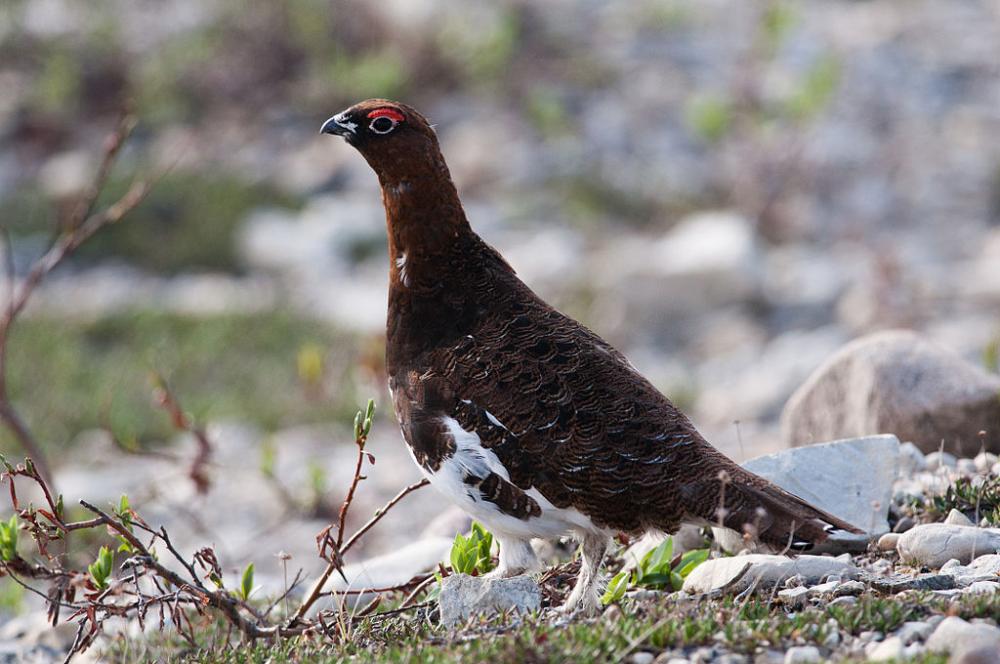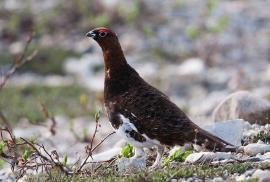Guide to Boreal Birds
Overview
The most widespread ptarmigan of the Far North, this species increases in number in some years but in others is very scarce. While the female incubates, the male guards the territory. When the chicks grow up, several families gather in large flocks and often migrate southward together when winter arrives. In summer ptarmigans feed on green shoots, buds, flowers, and insects; in winter they take mainly twigs and buds of willows and alders. The Willow Ptarmigan is also the state bird of Alaska.
Description
15-17" (38-43 cm). A small tundra grouse with red comb over each eye. In winter, entirely white except for black tail. In summer, male rusty red with white wings and belly; female mottled and barred with brown except for white wings. Spring and fall molting plumages show a variety of checkered patterns. Summer males of other ptarmigan species more grayish. Winter Rock Ptarmigan has black stripe through eye. White-tailed Ptarmigan has entirely white tail.
Voice
In flight, courting males have a loud, staccato go-back, go-back, go-back, and other guttural calls.
Nesting
7-10 yellowish eggs, blotched with brown, in a scrape lined with grass and feathers, often sheltered by vegetation, rocks, or logs.
Habitat
Tundra; also thickets in valleys and foothills; muskeg.
Range/Migration
Breeds from Alaska east to Labrador, and south to central British Columbia, northern Ontario, and central Quebec. Winters south to forested regions of central Canada. Also in Eurasia.



